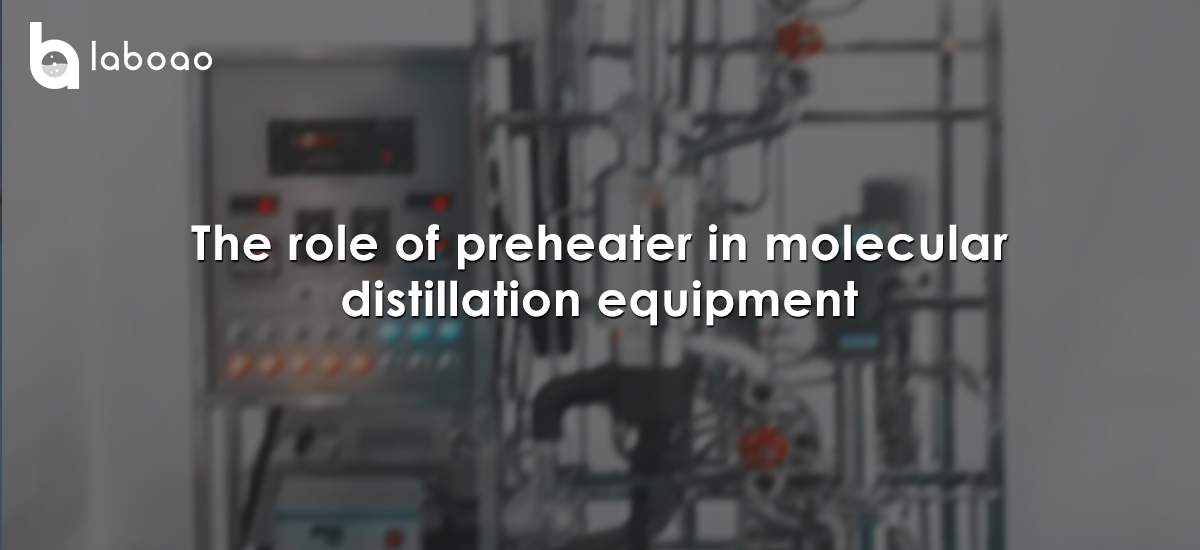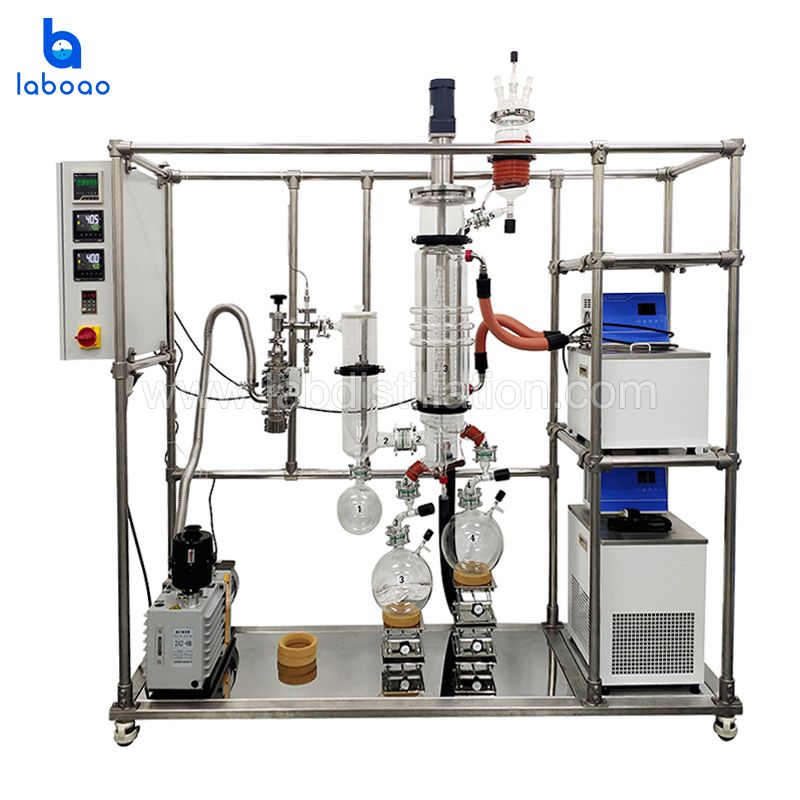
The following are the specific functions and technical significance of the preheater in the molecular distillation process:
1. Raise the material temperature and optimize the film-forming conditions
(1) Improve fluidity: The preheater heats the raw materials (such as plant extracts, high-viscosity oils, etc.) to reduce their viscosity so that they can be more evenly distributed on the heated wall surface after entering the evaporator, forming a stable and thin liquid film. For example, a sleeve-type or plate-type preheater can quickly raise the material temperature through heat conduction to avoid uneven flow or accumulation caused by excessive viscosity.
(2) Shorten the evaporation time: The preheated material is close to the evaporation temperature, which reduces the time it absorbs heat in the evaporator, thereby reducing the risk of decomposition of heat-sensitive substances caused by long-term heating.
2. Reduce evaporation energy consumption and improve thermal efficiency
(1) Pre-supplementation of heat energy Molecular distillation needs to be carried out under vacuum (usually less than 1 mbar) and high temperature (such as 200°C). The preheater uses waste heat (such as the heat of the components after distillation) or external heat sources (steam, heat transfer oil) to preheat the material, reducing the heat required to be provided in the main evaporation zone and significantly reducing energy consumption.
(2) Matching the evaporator temperature gradient The preheater can adjust the material temperature to close to the evaporator inner wall temperature, avoiding local overheating or condensation reflux due to excessive temperature difference, ensuring efficient and stable evaporation process.
3. Prevent equipment blockage and coking
(1) Pre-removal of volatile impurities Some preheaters are designed with degassing function, which can remove low-boiling impurities (such as moisture and solvent residues) in the raw materials and reduce the risk of coking in the evaporator.
(2) Avoid solid particles from depositing on the preheater before feeding to remove unfiltered solid impurities (such as plant residues) to prevent them from adhering to the evaporator wall or scraper system, thereby extending the equipment maintenance cycle.
4. Adapt to diverse material requirements
(1) Flexibly respond to different viscosity materials by adjusting the preheating temperature (such as the efficient heat transfer of plate heat exchangers or the simple structure of shell and tube heat exchangers), which can adapt to the preheating requirements of high viscosity materials (such as grease) or low viscosity liquids (such as solvents).
(2) Support multi-stage separation process In a multi-stage molecular distillation system, the preheater can work in conjunction with other pretreatment equipment (such as a degasser) to ensure accurate temperature control of the material at each stage and improve separation purity.
5. Typical preheater types and design points
(1) Structural type
Tube-in-tube type: The inner tube carries the material, and the outer tube carries the heating medium (such as steam). The structure is simple and pressure-resistant, and is suitable for medium and low pressure systems.
Plate type: The corrugated plates are stacked to form a heat transfer channel, which has high heat transfer efficiency and is easy to clean. It is suitable for materials with high cleanliness requirements.
Spiral flow guide type: The spiral channel prolongs the material residence time to achieve uniform preheating, which is especially suitable for materials that are easy to crystallize or have high viscosity.
(2) Design requirements
Temperature control accuracy: It needs to match the molecular distillation vacuum (such as 0.001 mbar) and evaporation temperature (usually below 350°C) to avoid decomposition caused by overheating.
Corrosion resistance: For corrosive materials (such as acidic extracts), PTFE or stainless steel materials are required.
Sealing: Prevent leakage of volatile components during preheating, which will affect the stability of the vacuum system.
6. Precautions in practical applications
Matching of preheating temperature and material properties: For example, high-boiling point materials (such as glycerol) require higher preheating temperatures to reduce evaporation resistance.
Prevent thermal shock: Avoid thermal stress damage to the equipment caused by sudden rise in material temperature, and gradually increase the temperature through the temperature control system.
Regular maintenance: Clean the coking or sediment in the preheater to prevent the heat transfer efficiency from decreasing.
The preheater is not only a simple temperature raising device in molecular distillation, but also a key link in optimizing energy consumption, ensuring separation efficiency, and extending equipment life. Its design needs to comprehensively consider material characteristics, process requirements and system integration, and achieve efficient and stable separation process through precise thermal management.
